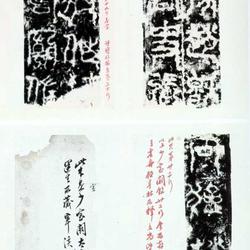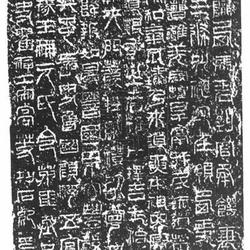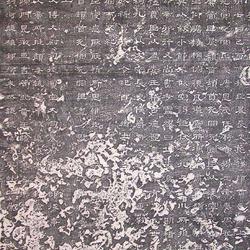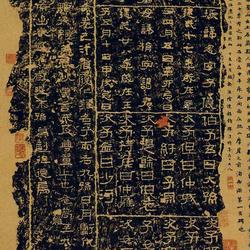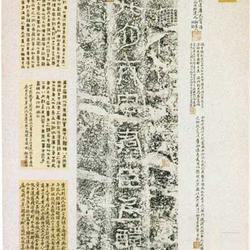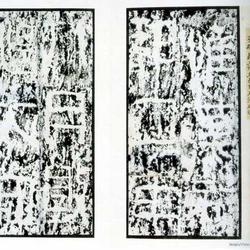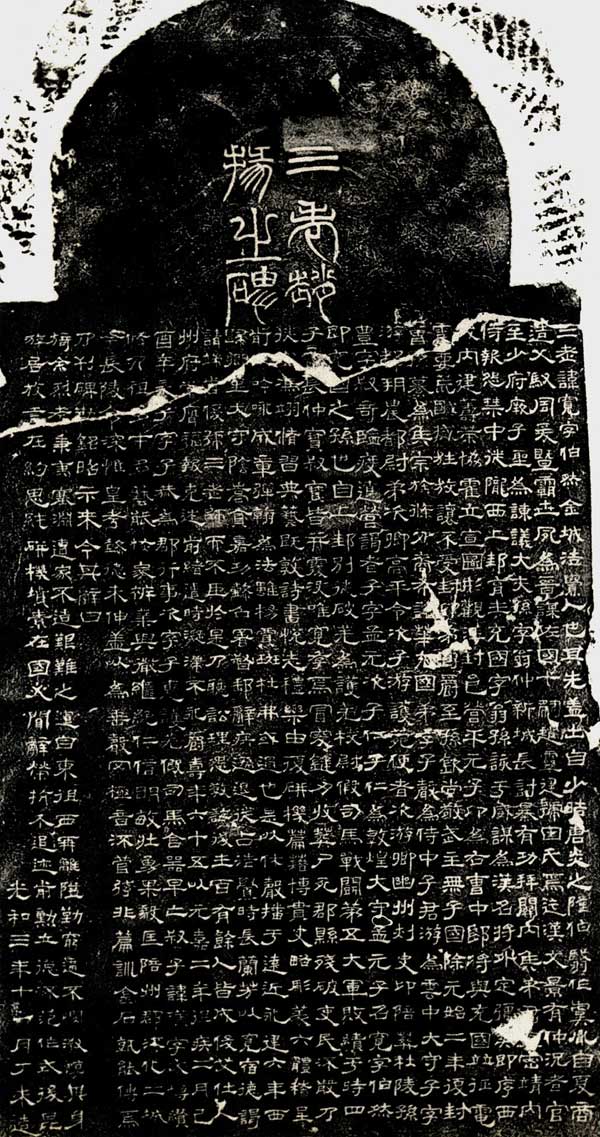
This stele is also called the "Three Old Man Zhao Kuan Stele", or simply the "Zhao Kuan Stele". Engraved in the third year of Guanghe (180) of the Eastern Han Dynasty. 23 lines, 32 characters, Qinghai Provincial Library. It was unearthed in Baiyazi, west of Laoyacheng, Ledu County, Qinghai Province in 1942. When it was unearthed, it had twists and turns from the character "三" in the first line to the character "yan" in the 22nd line. It was once owned by Ma Bufang and later included in the Qinghai Provincial Library. In 1950, the museum caught fire and the building collapsed and the monument was broken into pieces. Only a large piece of the bowl mouth remained.
The owner of the monument, Zhao Kuan, whose courtesy name was Boran, was a native of Jincheng County (governing Yunwu, now on the north bank of the Yellow River in the northwest of Gaolan, Gansu) (the old city is in the east of Nianbo County in today's Gansu). The grandson of the famous Han general Zhao Chongguo. He once accompanied the fifth general to defeat the Qiang, but was defeated and suffered heavy casualties. Fortunately, he survived. He had a literary name, and his official rank was Sanlaopu ("Sanlao" was the name of the official in charge of culture in the Han Dynasty). Emperor Huan died in February of the second year of Yuanjia (152) at the age of sixty-five. This stele was first recorded in Zhang Wei's "Longyou Jinshilu". The inscriptions on the stele are small, the calligraphy is beautiful and vigorous, and the pens used are square and round, with circles being the main ones. Critics say that it has the meaning of "Zhang Qian", "Huashan" and "Xiaoguan", and is unique. It is difficult to see the fine rubbings when they are first unearthed. It was introduced in the fifth issue of "Cultural Relics" in 1964. The third issue of "Calligraphy" in 1983 has photocopies and full extensions.

